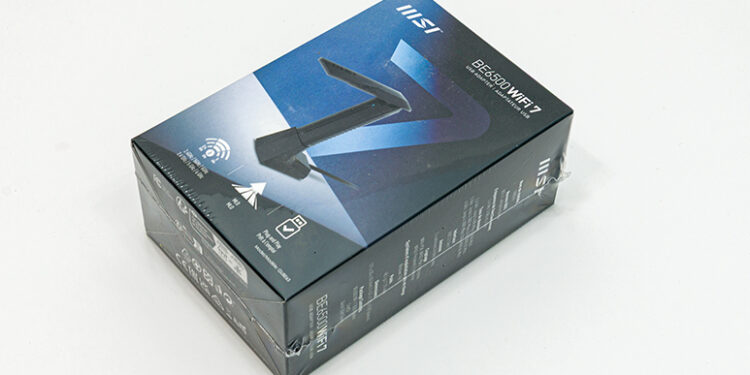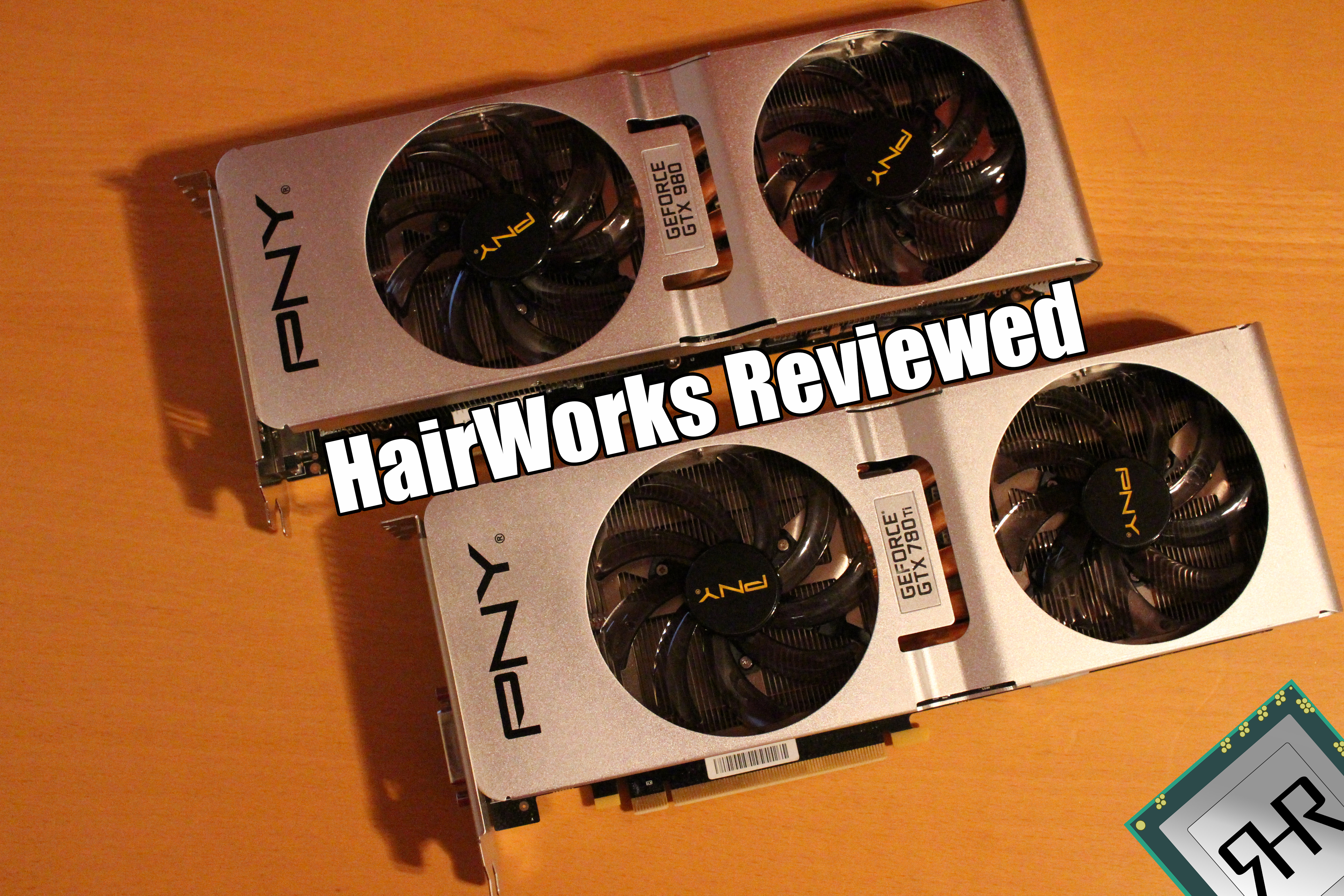
If there is one thing that MSI are the inarguable masters at, it is not only quickly figuring out a working formula for a given market but then slowly, dare we say ‘conservatively’, tweaking it so as to optimize it without ever losing focus on what makes ‘it’ special. We make mention of this as the BE6500’s shipping container doesn’t look, act, or even ‘feel’ all that differently from its predecessor. This is a Good Thing™. The AXE5400 came clad in a shipping container that was a veritable master class in how to do things right in the USB networking marketplace.

Externally it is extremely aesthetically pleasing. Clad in a veritable ton of information that should give darn near any buyer a good idea of what exactly it has to offer. Best of all, in picture form, it provides an excellent argument for why one should opt for it over the “other guys”. To be blunt, that best-in-class cradle all by itself puts the BE6500 in a class all its own. However, it also showcases the fact that this bad boy comes with both a large and adjustable antenna array. Sure, the picture is a groan-worthy Dad Joke “7”… but it works. Even novices picking up their first ever USB networking device will instinctively understand that this model is a cut above the rest.

Internally, that shipping container MSI has, once again, bestowed upon their USB networking device a level of protection rarely seen in this corner of the market. To be precise, just like the AXE5400 before it, MSI has spurned the use of plastic and instead opted for copious amounts of cardboard. How much cardboard? Think more cardboard than the weight of the device it is protecting for a point of reference and then keep going, as the total weight of this box + BE6500 + cradle is ~440 grams. Color us highly impressed.

Moving on and zooming in on the accessory list. The reason we love the USB cradle MSI includes with their USB devices is simple. It works better than the competition’s options. Period. Full Stop. The other guys go to (typically) Edimax and ask for their cheapest USB adapter, and if you are lucky, it is 30 inches long and is invariably a totally vertical orientation style cradle. Which is… fine… if your router is in direct line with said cradle or your adapter has an adjustable antenna. If, on the other hand, your router is below it, or above it (say you did things right and have hard-wired wireless access points on your ceiling), that 90-degree orientation performs poorly. It will impact performance. It will reduce connectivity distance. MSI’s comes with a 40-inch-long cable, and the cradle tilted backwards, giving you redundancy in optimizing the signal path.

To be fair, some of the competition do include a tilted cradle. Some even include an adjustable antenna array. Few do both. Fewer, basically zero, do both at this price point while also being WiFi 7. Instead, these “high-end” features are reserved solely for the premium models, and the reasonably priced options purposely get shafted. MSI includes this cradle on all their next-gen USB networking models.

Before we move on, MSI’s cradle design has changed. Noticeably changed. Arguably in a good way. The last-gen version came with a ‘classic MSI’ stylized cradle with a large V-shaped footprint. We personally love its stability, but some clients did complain about how large it was and how noticeable it was. This new version is indeed smaller, but not small and certainly not tippy.

Basically, MSI has solved the typical small USB cradle “tippiness” issue via weights. In simplistic terms, this cradle weighs more than the BE6500, which radically lowers the center of gravity, and while still not as good as the previous generation’s ‘wide stance’ design… is darn decent. You will have to work at it to tip this bad boy over… and at which point it will be your fault if it falls over.

This change to a smaller but heavier design has also necessitated a different angle to the USB Type-A port. Specifically, instead of the BE6500 leaning back ~30 degrees like it would if you plugged it into the AXE5400’s cradle, it now leans back about nine-ish degrees.

Which means that you will have to adjust the antenna array from a 90-degree orientation if your closest wireless access point is more than ~10 feet away, and if closer than ten, you may even have to turn it around so the array can “lean back” enough to be in direct line with said AP. This change, in most environments, is fine… not perfect, but fine. You basically will just have to futz with it more than the darn near universally optimal AXE5600 when dealing with home environments… but conversely will have to futz with it less outside the home.

Put another way, “you pay your money and you take your chances,” as there is no such thing as a perfect setup for every single environment. Furthermore, the amount of effort involved in tweaking is a nothing burger in the grand scheme of things, as the BE6500 carries over the AXE5400’s antenna array (albeit now the upgraded WiFi 7 certified variant).

This means it is not only ~1000mm long, but it also swivels from basically closed/0-degrees to 90 degrees (technically better than 100 when in its cradle)… and it is an AirGAIN based antenna array.

Yes. Once again, MSI has not included three separate antennas (one per channel), but AirGAIN is known for its excellent, and yet compact antennas that can easily cover the 4.2cm (6GHz) to 12.5cm (2.4GHz) radio wave spectrum. Sure, they are equally known for… “prioritizing” the performance of the smaller end over the larger end; that is fine. 2.4GHz networks are not exactly known for their speed, whereas WiFi 7’s success hinges on its ability to deliver higher performance than WiFi 6.

Moving on. Much like the cradle has undergone tweaking, but still is blatantly “MSI,” so too has the chassis which houses the BE6500’s components. In the last gen, MSI was arguably a little too far toward the “look at me” end of the spectrum with the whole gold icons taking up a good chunk of the highly angular (arguably “aggressive”) chassis. Listening to feedback, they toned things down and improved upon the design at the same time. On the aesthetics front, you will be greeted with a “blacked-out” device. No gold. Not even white. You get black. Which will work noticeably better in business (or College or even purple hair University) environments than the AXE5400.

Furthermore, the ventilation for the BE6500 has been upgraded from its predecessor. Now consisting of massive cooling slits, the big old hunk of alloy heatsink inside should now be able to easily passively radiate the couple watts (at most) of waste heat it produces. Which ironically will be less than the AXE5400 on all three bands. This is because the latest and greatest Realtek RTL89x2A is more efficient than its predecessors. We are only talking tenths of watt differences, but because the array and controller combination is more sensitive, the BE6500 can ‘talk’ to your router/ap while using (slightly) less power than the AXE5400. For example, when you are running this device in the same room as the wireless access point, it’s going to consume maybe 2 to 3 watts of power. At long range, it’s going to max the USB 3.0 bus (non-power delivery portion) standard out as it needs to boost its signal in order to ensure connectivity. Mix in a very nice low power state of basically 0.1 watts or less of ‘idle’ power consumption, and the BE6500 is a rather nice upgrade over the 6E generation.

Speaking of the Realtek RTL8912 chipset… Yes. In Windows, it will show up as the ’22. Not the ’12. This is because both use the same driver package. The 12 just lacks the Bluetooth module, and Realtek… well, are Realtek. They consider naming standards to be more like ‘suggestions’ than actual standards. So do not be surprised or shocked or think you got a bonus feature. This is a Realtek RTL8912-based device. Nothing more. Nothing less.

Which we personally think is a good thing. Sure, Qualcomm is making some good kit. Same with Intel. Even MediaTek is no longer a used baby diaper dumpster fire (now they are just a dumpster fire). Those options are power-hungry and would necessitate a change from a USB 3.0 interface to a USB 3.2 Gen 2 interface… a bigger heatsink to cool it… and a bigger chassis to house it… and… and… and. Basically, Realtek are master at ‘good enough’. This pretty much is what you want when you pick up any USB network adapter… as otherwise you would be going PCIe (or M.2) and not bothering with low-power USB.

Before we get to testing, we do have to go over one more thing. As much as it pains us to admit it… we were wrong in the AXE5400 review. To be precise, we were wrong when we said it was not really portable. Certain Southern readers pointed out that its dimensions were well within the ‘EDC’ range. So to test out this claim of Everyday Carry compatibility, we pulled out a couple of our favorite foldable blades that are considered good EDC options and got to compare. Which we would have never… ever thought of on our own.

As you can see, it is not as long as a Spyderco (heinous) Canis.

It is not as long nor as wide as a Spyderco Military 2 (and it is downright short compared to Endura based models like the Matriarch line).

It’s actually pretty close to the size of a decent PCIe to USB 20G adapter… albeit a couple of millimeters thicker. So we were indeed incorrect. This device is less portable than many, but that is different from saying it is not a practical portable solution. We will endeavor to do better in the future.










